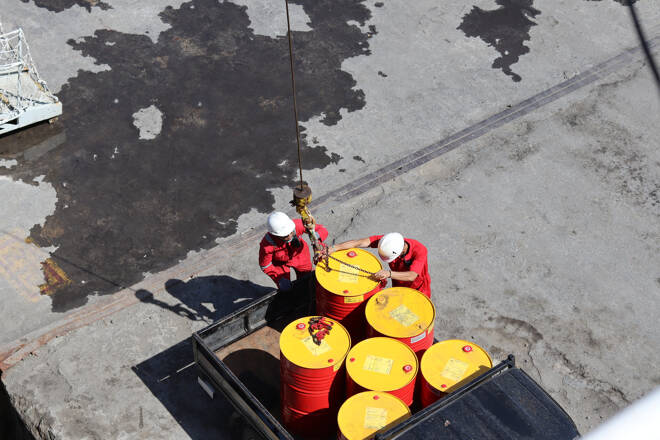Advertisement
Advertisement
Oil Price Forecast: Volatile Amidst Debt Ceiling Talks, Strong Fuel Demand
By:
Debt ceiling talks, fuel demand, and supply-demand gap shaped oil prices, causing fluctuations in market sentiment.
Oil Highlights
- Oil prices impacted by U.S. debt ceiling negotiations
- Optimism over U.S. fuel demand drives prices up
- Concerns over inventory levels and economic recovery affect market sentiment
Oil Overview
On Thursday, oil prices fell in early Asian trade as traders warily watched for signs of progress on talks to raise the U.S. debt ceiling, following a surge of nearly 3% in the previous session fueled by optimism over U.S. fuel demand. Investors were eagerly awaiting further evidence that a debt ceiling deal would happen soon, as markets remained in a “wait-and-watch mode” over the outcome of the negotiations.
At 06:16 GMT, WTI Oil is trading $72.54, down $0.14 or -0.19%. On Wednesday, the United States Oil Fund ETF (USO) settled at $64.61, up $2.07 or +3.31%.
Oil Prices Surge Amid Debt Negotiations
On Wednesday, oil prices experienced an increase of about $2, primarily driven by an atmosphere of optimism surrounding the negotiations over the U.S. debt ceiling and strong oil demand. These positive factors outweighed concerns about an abundant supply in the market. Furthermore, there was a significant drop in U.S. gasoline inventories due to a surge in demand, reaching its highest levels since 2021. This plunge in inventories further supported the main crude benchmarks, leading to a settlement that was more than $2 higher. President Joe Biden and top U.S. congressional Republican Kevin McCarthy expressed their determination to reach a deal soon, emphasizing the importance of avoiding an economically catastrophic default.o reach a deal soon and avoid an economically catastrophic default.
Debt Ceiling Talks Spark Optimism
On Tuesday, Biden and McCarthy agreed to negotiate directly on the debt ceiling issue. The agreement must be reached and passed by both chambers of Congress before June 1. This development brought hope for a debt ceiling agreement, contributing to positive sentiment in the oil market.
Oil Market Defies Inventory Worries
It’s worth noting that these positive factors outweighed concerns about an increase in crude inventory of 5 million barrels, as reported by the Energy Information Administration, and the announcement of an interest rate hike possibility by the U.S. Federal Reserve. Additionally, the International Energy Agency predicted a significant demand-supply gap in the second half of the year, with China expected to account for a substantial portion of oil demand growth.
Cautiously Optimistic Outlook
Overall, the crude oil market experienced fluctuations throughout the week, with optimism surrounding U.S. fuel demand, strong oil trade expectations related to the debt ceiling negotiations, and a sharp plunge in gasoline inventories driving prices up. However, concerns over economic recovery, inventory levels, and the outcome of the debt ceiling talks kept investors cautious, resulting in price adjustments.
Technical Analysis
WTI Oil is trading on the weakside of $72.57 (S1), making it new resistance. Overtaking, $72.57 (S1) will signal the return of buyers. Generating enough upside momentum could drive the market into the major pivot at $78.02.
A sustained move under $72.57 (S1) will indicate the selling pressure is getting stronger. If this creates enough downside momentum then look for the selling to possibly extend into $68.49 (S2) over the near-term.
Resistance & Support Levels
| S1 – $72.57 | R1 – $78.02 |
| S2 – $68.49 | R2 – $82.10 |
| S3 – $63.04 |
About the Author
James Hyerczykauthor
James Hyerczyk is a U.S. based seasoned technical analyst and educator with over 40 years of experience in market analysis and trading, specializing in chart patterns and price movement. He is the author of two books on technical analysis and has a background in both futures and stock markets.
Did you find this article useful?
Latest news and analysis
Advertisement
